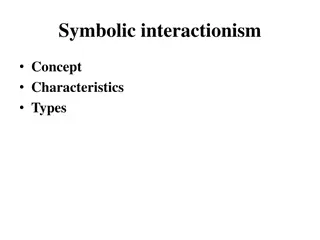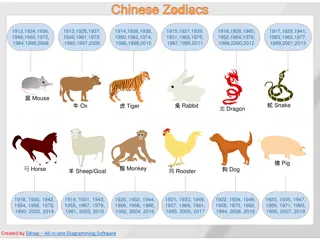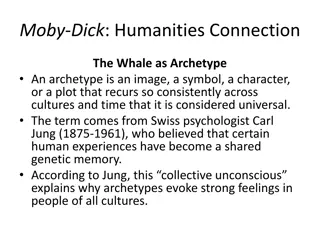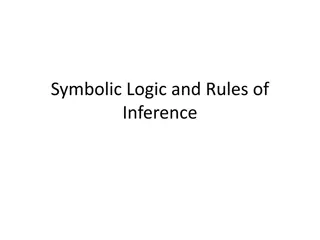Dynamic Symbolic Data Structure Repair
The importance and goal of repairing corrupted data structures in software engineering. Explore the concept of bytecode instrumentation and an approach to automatically prevent software crashes.
Download Presentation

Please find below an Image/Link to download the presentation.
The content on the website is provided AS IS for your information and personal use only. It may not be sold, licensed, or shared on other websites without obtaining consent from the author.If you encounter any issues during the download, it is possible that the publisher has removed the file from their server.
You are allowed to download the files provided on this website for personal or commercial use, subject to the condition that they are used lawfully. All files are the property of their respective owners.
The content on the website is provided AS IS for your information and personal use only. It may not be sold, licensed, or shared on other websites without obtaining consent from the author.
E N D
Presentation Transcript
Sample Restful Webervice Restful web service with Node.js
Node.js RESTful API REST stands for REpresentational State Transfer. REST is web standards based architecture and uses HTTP protocol. In this architecture, every component is a resource and a resource is accessed by a common interface using HTTP standard methods. REST was first introduced by Roy Fielding in 2000. In REST architecture, a REST Server simply provides access to resources and REST client accesses and modifies the resources. Here each resource is identified by URIs (which are global IDs). REST uses various representation to represent a resource like text, JSON, XML. JSON is the most popular one.
HTTP Methods There are four HTTP methods are commonly used in REST based architecture: HTTP Method Description GET Provides a read only access to a resource. PUT Used to create a new resource. DELETE Used to remove a resource. POST Used to update an existing resource or create a new resource.
RESTful Web Services A web service is a collection of open protocols and standards used for exchanging data between applications or systems. Software applications written in various programming languages and running on various platforms can use web services to exchange data over computer networks like the Internet in a manner similar to inter-process communication on a single computer. This interoperability e.g. between java and Python, or Windows and Linux applications is due to the use of open standards. Web services based on REST Architecture are known as RESTful web services. These web services uses HTTP methods to implement the concept of REST architecture. A RESTful web service usually defines a URI, Uniform Resource Identifier a service, provides resource representation such as JSON and set of HTTP Methods.
Creating a RESTful Web Server We will create a REST Web Server with Web Service to manage users. The web service will perform the following functions: URI HTTP Method POST body Result /users/ GET Empty Show list of all the users /users/:id GET Empty Show details of a user. Create a RESTful Web Server inside myapp folder (in which contains all the programs that using express.js). (See app10.js) Steps to set up RESTful Web Server: Create a json based database of users. (user.json) Create a REST Web Server to handle requests from clients. (app10.js)
Running the RESTful Web server Start the web server: /nodejs_workspace/myapp/node app10.js To call the web server from browser: From browser: http://localhost:8081/ to see instructions From browser: http://localhost:8081/users to see all data From browser: http://localhost:8081/1 to see information about id = 1 To call the REST web service from another server: From another server: /nodejs_workspace/myapp/node app10_client.js From another server: /nodejs_workspace/myapp/node app10_client2.js
app10.js /* REST Web Server app10.js for Week05 JSON DB: user.json To run the program: http://localhost:8081/users/ to list all users OR http://localhost:8081/users/1 2 3 to see details for id=1, 2, 3 */ var express = require('express'); var app = express(); var router = express.Router(); var fs = require('fs' ); router.get('/', function (req, res, next) { console.log('request from root'); res.send('To list users: http://localhost:8081/users </br>' + 'To list details: http://localhost:8081/users/1'); });
app10.js // GET users listing router.get('/users', function (req, res, next) { fs.readFile(__dirname + "/user.json", "utf8", function (error, data) { console.log(data); res.end(data); }); });
app10.js // show the details app.get('/users/:id', function (req, res, next) { // reading the existing users. fs.readFile(__dirname+ "/user.json", "utf8", function (error, data) { // converts string data to JSON format var d = JSON.parse(data); // converts object into associative array, and assigned user1 or user2 or user3 to var user var user = d["user" + req.params.id]; // if user not found (user === undefined) if (typeofuser === 'undefined') { console.log('No such user, id: ' + req.params.id); res.end('No such user, id: ' + req.params.id); } else { console.log(user); res.json(user); } }); });
app10.js // mount the router on the app app.use('/', router); app.listen(8081, function () { console.log('app.js listening to http://127.0.0.1:8081/ or http://localhost:8081/'); }); console.log('Program End.');
app10_client.js /* app10_client.js */ // http module is required to create a web service client var http = require('http'); // options are to be used by request var options = { host: 'localhost', port: '8081', path: '/users' };
app10_client.js var callback = function (response) { // continuously update stream with data var body = ''; response.on('data', function (data) { body += data; }); response.on('end', function () { // data received completely console.log(body); }); }; // make a request to the server var req = http.request(options, callback); req.end();
app10_client2.js /* app10_client2.js */ // http module is required to create a web service client var http = require('http'); // options are to be used by request var options = { host: 'localhost', port: '8081', path: '/users/2' };
app10_client2.js // callback function is used to deal with response var callback = function (response) { // continuously update stream with data var body = ''; response.on('data', function (data) { body += data; }); response.on('end', function () { // data received completely console.log(body); }); }; // make a request to the server var req = http.request(options, callback); req.end();
user.json { "user1": { "name": "Name1", "password": "password1", "profession": "teacher", "id": 1 }, "user2": { "name": "Name2", "password": "password2", "profession": "librarian", "id": 2 }, "user3": { "name": "Name3", "password": "password3", "profession": "clerk", "id": 3 } }
References Node.js the Right Way, Jim R. Wilson, The Programatic Bookshelf, ISBN 978-1-937785-73-4 NodeJS: Practical Guide for Beginners, Matthew Gimson, ISBN 978-1- 519354-07-5 Express.js: Node.js Framework for Web Application Development, Daniel Green, ISBN 978-1-530204-06-9 Express.com Tutorials Point The Node Beginner Book, Manuel Kiessling, Leanpub, Link.























